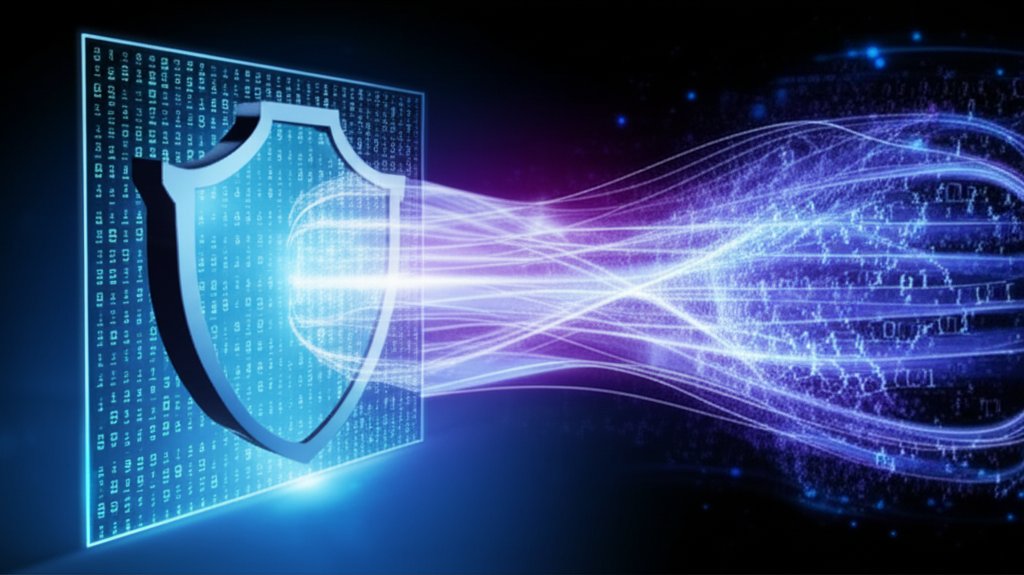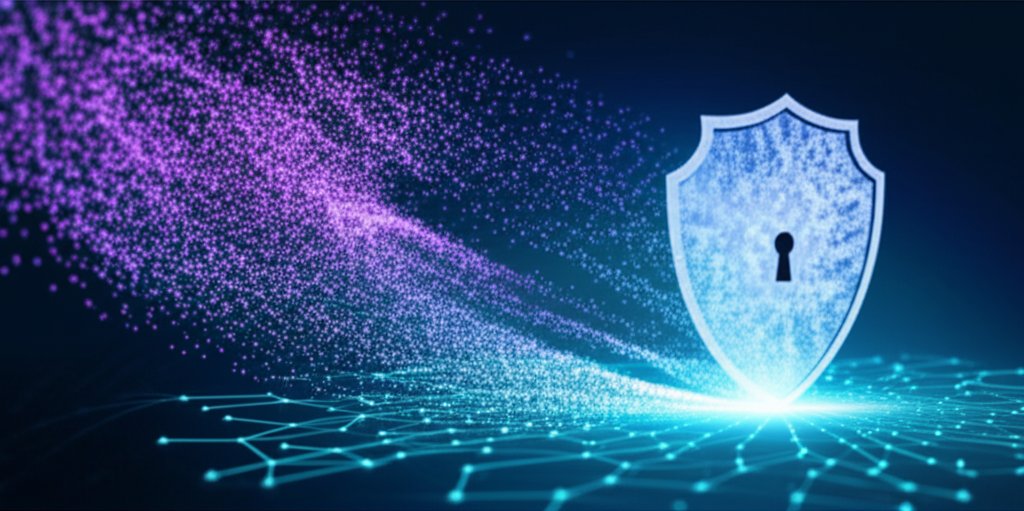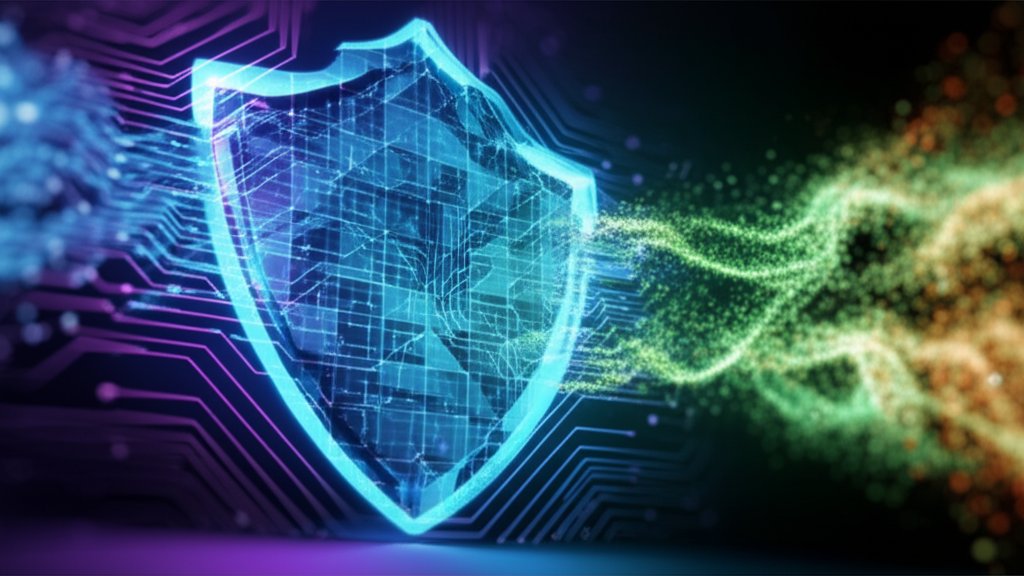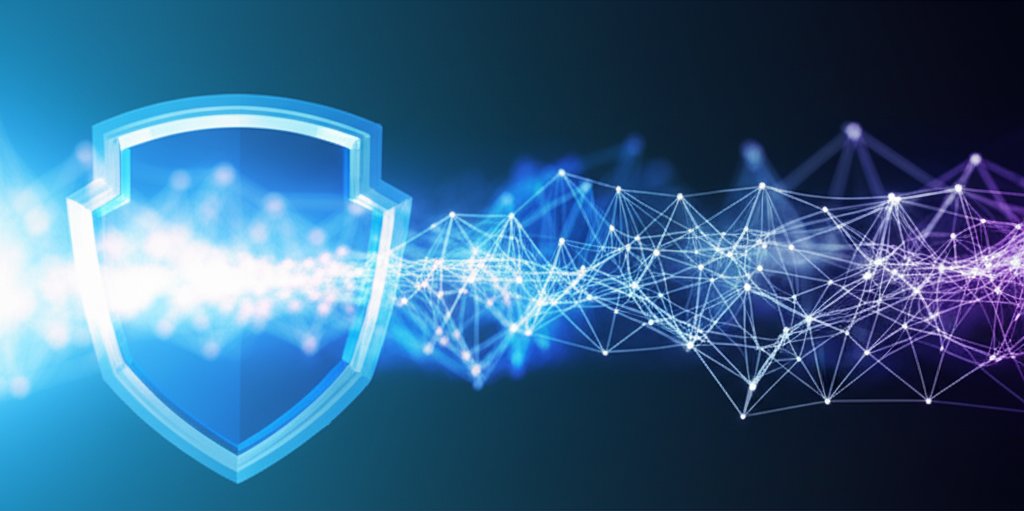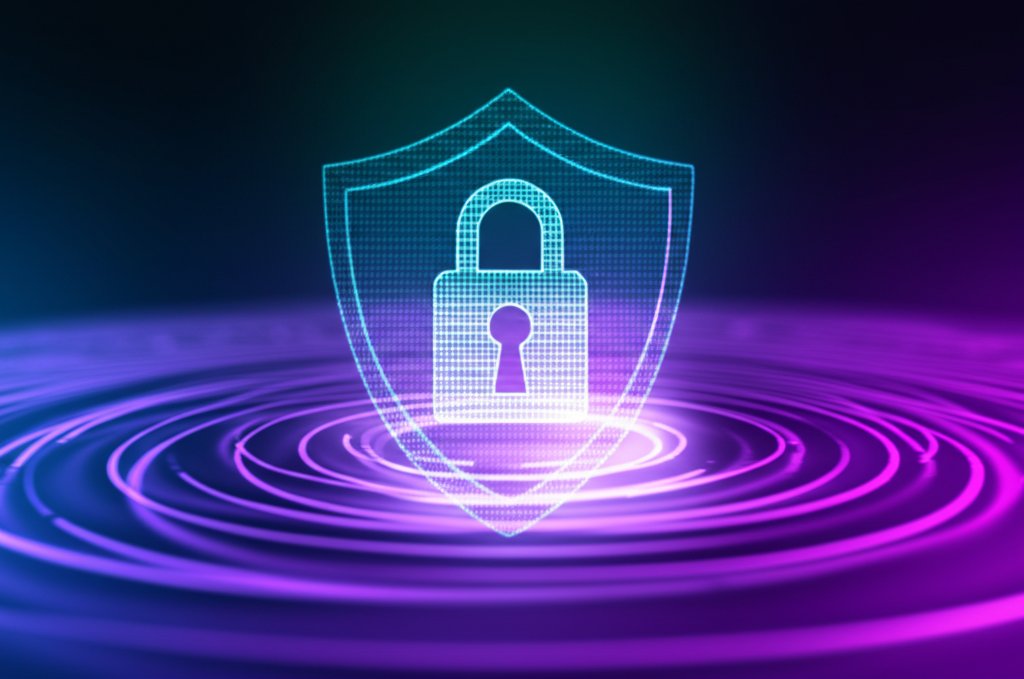Imagine a future where the digital locks protecting your most sensitive information—from your banking details to your personal photos and critical business secrets—suddenly become useless. It sounds like a plot from a science fiction movie, doesn’t it? Yet, a profound shift in computing, the advent of powerful quantum computers, could very well render today’s most trusted encryption methods obsolete.
As a security professional, I’m here to tell you that while this threat is real and warrants our attention, panic is not the answer. Instead, informed understanding and proactive preparation are our strongest defenses. This is precisely where Post-Quantum Cryptography (PQC) comes into play. It’s our collective, forward-thinking strategy designed to shield your invaluable data from tomorrow’s sophisticated cyber threats. In this article, we will thoroughly unpack the quantum threat, detail its implications for your digital life and business, and explain how PQC is being developed to safeguard our future.
The Looming Quantum Threat: Why Your Current Encryption Isn’t Future-Proof
For decades, our digital world has operated under the assumption that strong encryption algorithms provide an unbreakable shield for private and secure information. However, a new era of computing is on the horizon, one poised to challenge the very foundations of online security.
What is a Quantum Computer (and why should you care)?
When we talk about quantum computers, it’s crucial to understand we’re not simply discussing faster versions of our existing laptops or servers. These are fundamentally different machines, harnessing the mind-bending principles of quantum mechanics. Traditional computers use bits, which exist in binary states of either 0 or 1. Quantum computers, in contrast, use ‘qubits,’ which can be 0, 1, or both simultaneously (a state known as superposition). This unique capability, along with quantum phenomena like entanglement, allows them to solve certain types of complex problems exponentially faster than any classical computer could ever hope to.
Why should you care? Because some of those “certain types of complex problems” happen to be the intricate mathematical equations that underpin nearly all of our modern encryption methods.
How Quantum Computers Can Break Today’s Encryption
Much of our internet security, including secure websites (HTTPS), online banking, Virtual Private Networks (VPNs), and digital signatures, relies heavily on what is known as public-key cryptography. Algorithms like RSA (Rivest–Shamir–Adleman) and ECC (Elliptic Curve Cryptography) are the workhorses in this domain. They are incredibly secure against today’s classical computers because breaking them requires solving mathematical problems that are computationally infeasible – essentially, it would take billions of years for even the fastest supercomputer.
However, quantum computers, armed with powerful algorithms such as Shor’s algorithm, could potentially solve these specific mathematical problems in a matter of minutes or hours, rendering our current public-key encryption utterly vulnerable. This is where quantum algorithms like Shor’s pose a critical and direct threat to the confidentiality and integrity of our sensitive data.
Symmetric encryption, like AES (Advanced Encryption Standard), which is used to scramble the actual content of your messages or files, is more resilient. But even AES faces a threat from Grover’s algorithm. While Grover’s doesn’t break symmetric encryption outright, it significantly speeds up brute-force attacks, meaning we would need to use much longer key lengths (e.g., doubling from AES-128 to AES-256) to maintain the same level of security against a quantum attacker.
The “Harvest Now, Decrypt Later” Problem
Here’s a chilling thought: Even though fully capable quantum computers that can break current encryption don’t exist yet, sophisticated adversaries—such as state-sponsored actors and well-funded criminal organizations—are already collecting vast amounts of encrypted data. They are not breaking it now; they are storing it, patiently waiting for the day a sufficiently powerful quantum computer comes online. This strategy is known as the “Harvest Now, Decrypt Later” problem. Your encrypted emails, health records, financial transactions, and proprietary business secrets from today could be vulnerable years down the line, once these quantum decryption capabilities are readily available.
Introducing Post-Quantum Cryptography (PQC): The Next Generation of Data Protection
Fortunately, the cybersecurity community is not sitting idly by. We are actively engaged in developing the next generation of cryptographic solutions to combat this future threat: Post-Quantum Cryptography.
What is PQC?
Post-Quantum Cryptography (PQC) refers to new cryptographic algorithms that are specifically designed to run efficiently on today’s classical computers but are also proven to be resistant to attacks from future quantum computers. It’s important to clarify a common misconception: PQC is not “quantum encryption.” Quantum encryption, often associated with Quantum Key Distribution (QKD), leverages principles of quantum physics to exchange encryption keys, frequently requiring specialized hardware.
PQC, on the other hand, relies on new, complex mathematical problems that even quantum computers would struggle to solve efficiently. This makes PQC highly practical, as it can be implemented in existing software and hardware infrastructure, enabling a more seamless transition.
How PQC Works to Resist Quantum Attacks
Think of it this way: our current encryption, like RSA and ECC, is akin to a sophisticated lock that classical computers find impossible to pick. Quantum computers, armed with Shor’s algorithm, are like a master key that can bypass that specific type of lock entirely. PQC, then, is like upgrading to a completely new type of “quantum-proof vault.” This new vault uses fundamentally different kinds of locks, based on mathematical problems that even the quantum master key can’t easily crack.
These new mathematical foundations come from various fields, leading to different categories of PQC algorithms:
- Lattice-based cryptography: These algorithms, such as CRYSTALS-Kyber for key encapsulation and CRYSTALS-Dilithium for digital signatures (two of NIST’s first standardized algorithms), build security upon the difficulty of solving certain problems in high-dimensional lattices.
- Code-based cryptography: Relying on error-correcting codes, these algorithms (e.g., McEliece) have a long history of study and are considered very secure.
- Hash-based cryptography: These methods use cryptographic hash functions to generate digital signatures, offering a high degree of confidence in their post-quantum security.
- Multivariate polynomial cryptography: Security is derived from the difficulty of solving systems of multivariate polynomial equations.
- Isogeny-based cryptography: These newer candidates leverage the mathematics of elliptic curve isogenies.
Each category presents different trade-offs in terms of performance, key sizes, and security guarantees, but their common goal is to establish cryptographic primitives that are resilient against both classical and quantum attacks.
The Goal: Quantum-Resistant Algorithms & Standardization (NIST’s Role)
Developing these novel algorithms is one challenge; ensuring their widespread, secure, and interoperable adoption globally is another. That’s why the U.S. National Institute of Standards and Technology (NIST) has been leading a multi-year, rigorous, global effort to evaluate and standardize quantum-resistant algorithms. This rigorous process involves researchers from around the world submitting their proposed algorithms, which are then put through extensive testing and cryptanalysis by the international cryptographic community.
NIST has recently announced its first set of standardized algorithms, including CRYSTALS-Kyber for key establishment and CRYSTALS-Dilithium for digital signatures, alongside Falcon and SPHINCS+. This standardization is absolutely crucial for ensuring that PQC can be widely adopted across all our digital systems in a consistent and secure manner, providing a clear path forward for developers and implementers.
How PQC Will Protect Your Everyday Data and Small Business Information
So, how will PQC actually impact your digital life and business operations once fully integrated?
Securing Your Online Transactions and Communications
The moment PQC is fully implemented, you can expect your online activities to remain just as secure as they are today, but future-proofed against quantum threats. This means your HTTPS connections to banking sites, your encrypted emails, and your private messaging apps will all be protected against quantum attacks. The underlying protocols will simply upgrade to use PQC algorithms, largely transparently to you, the end-user.
Protecting Personal Files and Cloud Storage
Whether it’s your cherished family photos stored in Google Drive or sensitive professional documents in Dropbox, PQC will ensure that the encryption protecting your cloud storage data remains robust. Service providers will update their systems to incorporate PQC, safeguarding your stored data from potential future decryption by quantum computers.
Safeguarding Business Secrets and Customer Data
For small businesses, this isn’t just a technical detail; it’s about continued operation and survival. PQC will be vital for protecting sensitive customer information, financial records, intellectual property, and trade secrets. Losing this data to a quantum attack could be devastating, leading to massive financial losses, severe reputational damage, and significant legal repercussions. Maintaining robust security is paramount, especially as your digital footprint and reliance on digital systems expand.
The Role of PQC in VPNs, Password Managers, and Digital Signatures
These crucial tools, which many of us rely on daily, will also undergo a PQC upgrade. Virtual Private Networks (VPNs) will employ quantum-resistant key exchange mechanisms, ensuring your internet traffic remains private and secure. Password managers, which encrypt your stored credentials, will update their algorithms to PQC standards. And digital signatures, used to verify the authenticity of software updates, documents, and communications, will evolve to be quantum-safe, preventing malicious actors from forging identities or distributing compromised software.
What You Can Do Now: Actionable Steps for Individuals and Businesses
The quantum threat can feel distant and overwhelming, but it’s important to approach it with awareness, not alarm. Here’s what you should know and, more importantly, what you can do:
For Individuals:
- Stay Informed: Continue to learn about the quantum threat and PQC, just as you are doing by reading this article. Understanding the shift helps you contextualize news and prepare without undue anxiety.
- No Immediate Panic: The transition is underway and will be gradual. Cryptographers and organizations like NIST are actively working on this. While NIST’s target for potentially vulnerable cipher suites is around 2030, full migration across global systems will take many years. Your existing data isn’t suddenly vulnerable tomorrow, but long-term sensitive information is at risk from the “harvest now, decrypt later” problem.
- Look for “Quantum-Safe” or “PQC-Ready” Services: As the transition progresses, you’ll start seeing service providers (your bank, cloud storage provider, VPN service, email provider) announcing their adoption of “quantum-safe” or “PQC-ready” features. Pay attention to these announcements. Many organizations are already implementing “hybrid cryptography,” which means they’re using both classical and PQC algorithms simultaneously to provide robust security even during the transition phase.
- Advocate for Stronger Security: Empower yourself by asking your software and service providers about their PQC migration plans. Even a simple inquiry can signal to companies that their customers care about this issue, helping to accelerate their efforts to upgrade their systems.
For Small Businesses:
For small businesses, the stakes are higher, and proactive planning is essential. You might not have the resources of a large corporation, but your data is just as valuable and often a more enticing target.
- Conduct a Cryptographic Inventory: This is a critical first step. Identify all cryptographic assets within your organization. Where is encryption used? What algorithms are in place (e.g., RSA, ECC for public-key; AES for symmetric)? Which systems rely on these? This inventory will help you prioritize which systems need PQC migration first.
- Perform a Risk Assessment: Identify your most critical, long-lived data that could be vulnerable to future quantum attacks. This includes data with a long shelf-life (e.g., health records, patents, financial archives, intellectual property). Prioritize migration for systems handling this data.
- Stay Informed on NIST’s Progress: Keep track of NIST’s standardization efforts and guidance. Their publications will provide the most authoritative roadmap for PQC implementation.
- Develop a Phased Migration Strategy: Consider a phased approach for implementing PQC, perhaps starting with new deployments or less critical systems, then moving to more complex or legacy systems. Avoid waiting until the last minute.
- Budget and Plan for Legacy Systems: Be aware of the potential costs and complexities of updating legacy systems to PQC. Factor this into your long-term IT budget and strategy, as some systems may require significant overhaul or replacement.
- Engage with Vendors: Talk to your technology vendors (software providers, cloud services, hardware manufacturers) about their PQC readiness and migration timelines. Ensure their roadmaps align with your security needs.
The Road Ahead: Challenges and the Future of PQC
The Transition Period: A Complex Journey
Updating the world’s cryptographic infrastructure is an undertaking of monumental scale. It involves everything from internet protocols and software libraries to hardware, operating systems, and countless applications across every industry. This global transition will be complex, requiring meticulous planning, extensive testing, and unprecedented coordination. There will undoubtedly be challenges, but the collaborative effort of cryptographers, engineers, and policymakers around the globe is immense and unwavering.
Continuous Evolution of Cryptography
Cybersecurity is never a static target; it’s an ongoing process of adaptation. Just as PQC addresses the quantum threat, future advancements in computing or cryptanalysis may introduce new challenges that require further cryptographic innovation. The core principle remains constant: we must continuously evolve our defenses to stay ahead of emerging threats and protect our digital future.
Conclusion: Staying Ahead of the Quantum Curve
The quantum era presents both immense possibilities and profound security challenges. Post-Quantum Cryptography isn’t merely a technical upgrade; it’s our collective insurance policy for the future of digital security. It promises to keep your personal data and business operations secure against even the most powerful computers yet to be developed.
By staying informed about PQC, asking the right questions of your service providers, and for small businesses, proactively planning for this cryptographic migration, you are taking concrete, empowering steps to protect your digital life. The future of data security depends on our collective awareness, commitment to adaptation, and willingness to act now. Stay informed and proactive!
